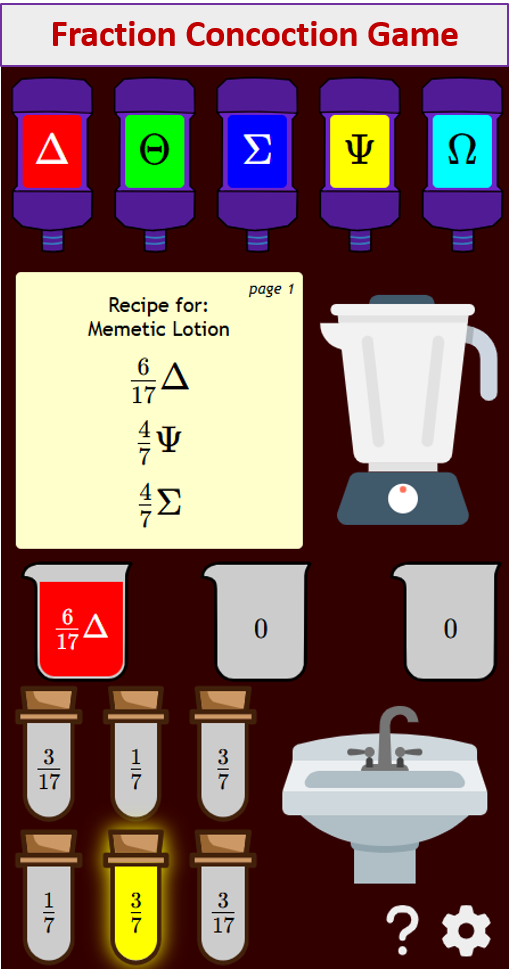

Illustrative Mathematics Curriculum for Grade 6, Grade 7, and Grade 8
Math Worksheets



Questions, answers, and resources for the Open Up Resources curriculum authored by Illustrative Maths are listed below. Click on the buttons to see a list of lessons in each unit and links to questions, answers, and explanatory videos for each lesson.
Grade 6
-
Unit 6.1: Area and Surface Area
- Reasoning to Find Area
- Lesson 1: Tiling the Plane
- Lesson 2: Finding Area by Decomposing and Rearranging
- Lesson 3: Reasoning to Find Area
- Lesson 4: Parallelograms
- Lesson 5: Bases and Heights of Parallelograms
- Lesson 6: Area of Parallelograms
- Lesson 7: From Parallelograms to Triangles
- Lesson 8: Area of Triangles
- Lesson 9: Formula for the Area of a Triangle
- Lesson 10: Bases and Heights of Triangles
- Lesson 11: Polygons
- Lesson 12: What is Surface Area?
- Lesson 13: Polyhedra
- Lesson 14: Nets and Surface Area
- Lesson 15: More Nets, More Surface Area
- Lesson 16: Distinguishing Between Surface Area and Volume
- Lesson 17: Squares and Cubes
- Lesson 18: Surface Area of a Cube
- Lesson 19: Designing a Tent
Parallelograms
Triangles
Polygons
Surface Area
Squares and Cubes
Let's Put it to Work
-
Unit 6.2: Introducing Ratios
- What Are Ratios?
- Lesson 1: Introducing Ratios and Ratio Language
- Lesson 2: Representing Ratios with Diagrams
- Lesson 3: Recipes
- Lesson 4: Color Mixtures
- Lesson 5: Defining Equivalent Ratios
- Lesson 6: Introducing Double Number Line Diagrams
- Lesson 7: Creating Double Number Line Diagrams
- Lesson 8: How Much for One?
- Lesson 9: Constant Speed
- Lesson 10: Comparing Situations by Examining Ratios
- Lesson 11: Representing Ratios with Tables
- Lesson 12: Navigating a Table of Equivalent Ratios
- Lesson 13: Tables and Double Number Line Diagrams
- Lesson 14: Solving Equivalent Ratio Problems
- Lesson 15: Part-Part-Whole Ratios
- Lesson 16: Solving More Ratio Problems
- Lesson 17: A Fermi Problem
Equivalent Ratios
Representing Equivalent Ratios
Solving Ratio and Rate Problems
Part-Part-Whole Ratios
Let's Put it to Work
-
Unit 6.3: Unit Rates and Percentages
- The Burj Khalifa
- Lesson 1: The Burj Khalifa
- Lesson 2: Anchoring Units of Measurement
- Lesson 3: Measuring with Different-Sized Units
- Lesson 4: Converting Units
- Lesson 5: Comparing Speeds and Prices
- Lesson 6: Interpreting Rates
- Lesson 7: Equivalent Ratios Have the Same Unit Rates
- Lesson 8: More About Constant Speed
- Lesson 9: Solving Rate Problems
- Lesson 10: What Are Percentages?
- Lesson 11: Percentages and Double Number Lines
- Lesson 12: Percentages and Tape Diagrams
- Lesson 13: Benchmark Percentages
- Lesson 14: Solving Percentage Problems
- Lesson 15: Finding This Percent of That
- Lesson 16: Finding the Percentage
- Lesson 17: Painting a Room
Unit Conversion
Rates
Percentages
Percentages
Let's Put it to Work
-
Unit 6.4: Dividing Fractions
- Making Sense of Division
- Lesson 1: Size of Divisor and Size of Quotient
- Lesson 2: Meanings of Division
- Lesson 3: Interpreting Division Situations
- Lesson 4: How Many Groups? (Part 1)
- Lesson 5: How Many Groups? (Part 2)
- Lesson 6: Using Diagrams to Find the Number of Groups
- Lesson 7: What Fraction of a Group?
- Lesson 8: How Much in Each Group? (Part 1)
- Lesson 9: How Much in Each Group? (Part 2)
- Lesson 10: Dividing by Unit and Non-Unit Fractions
- Lesson 11: Using an Algorithm to Divide Fractions
- Lesson 12: Fractional Lengths
- Lesson 13: Rectangles with Fractional Side Lengths
- Lesson 14: Fractional Lengths in Triangles and Prisms
- Lesson 15: Volume of Prisms
- Lesson 16: Solving Problems Involving Fractions
- Lesson 17: Fitting Boxes into Boxes
Meanings of Fraction Division
Algorithm for Fraction Division
Fractions in Lengths, Areas, and Volumes
Let's Put it to Work
Try out our new and fun Fraction Concoction Game.
Add and subtract fractions to make exciting fraction concoctions following a recipe. There are four levels of difficulty: Easy, medium, hard and insane. Practice the basics of fraction addition and subtraction or challenge yourself with the insane level.



We welcome your feedback, comments and questions about this site or page. Please submit your feedback or enquiries via our Feedback page.